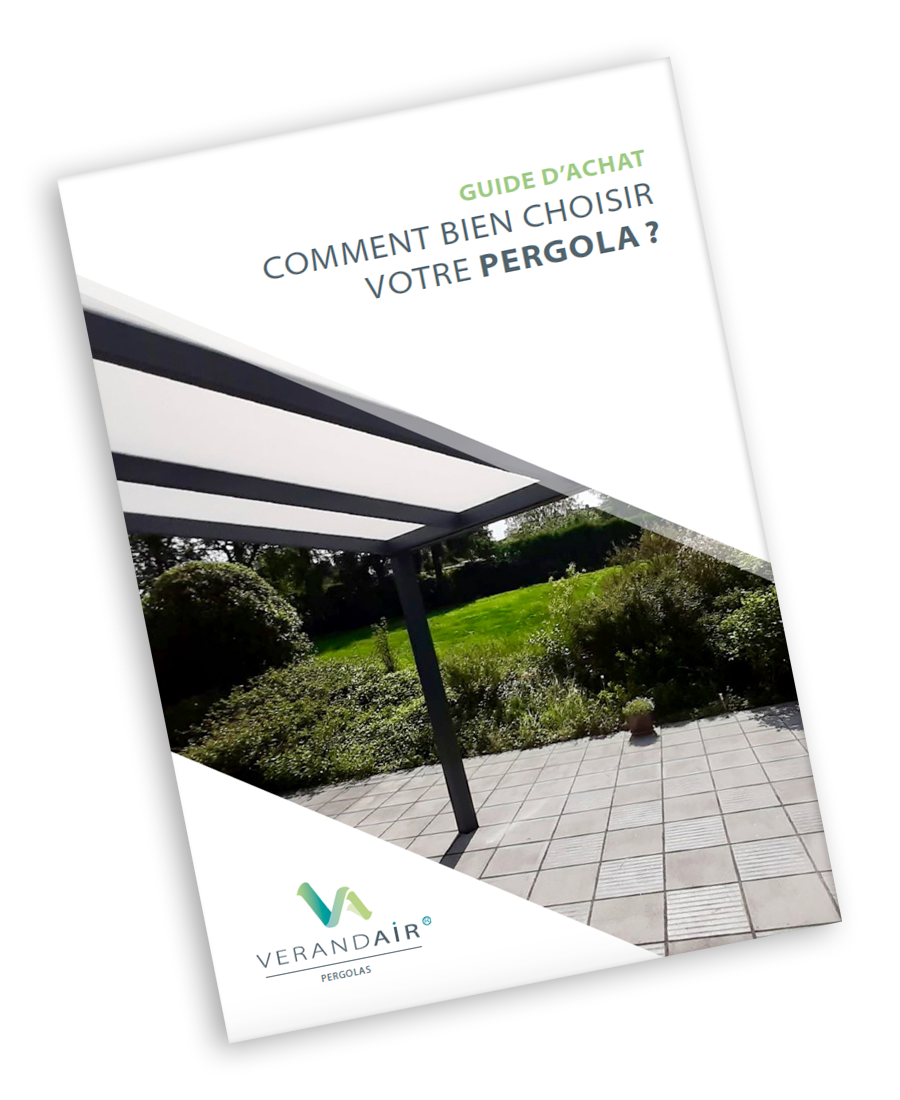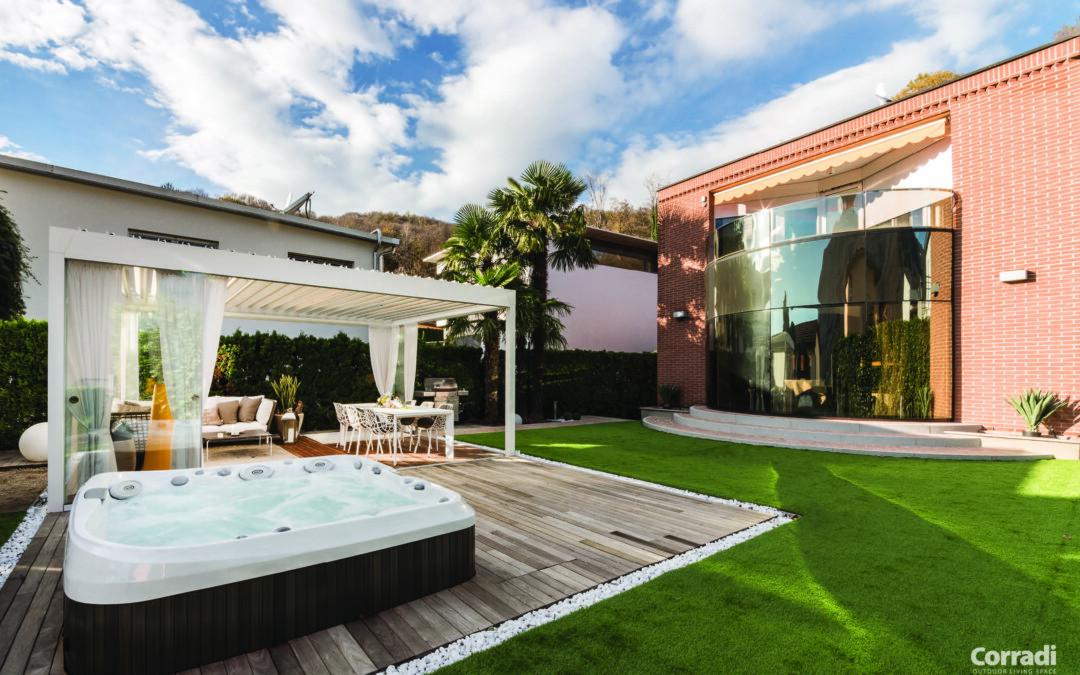Pergolas and retractable awnings have the same mission: to protect you from the sun, the rain and any other bad weather. Are you torn between the two? In our article, we’ll look at their advantages and disadvantages to help you make the best choice.
What is a retractable awning?
Also known as an awning or retractable canopy, the marquee is attached to the outside wall of a home. It consists of a canvas supported by a structure, sometimes made of aluminum.
You can lower and raise it as you like, depending on the weather and the time of day. Deploy it in front of your bay window, for example, to protect you from the sun’s blinding rays. It will also provide shade on your balcony or terrace.
The advantages of awnings
Available in several sizes and models, you are free to configure their height, width and inclination to suit your needs.
They are generally manual, but electric products are also available. Thanks to a remote control or switch, they can provide shade for your terrace.
The disadvantages of awnings
Although awnings offer protection from the sun, they do have a few disadvantages:
- They require regular maintenance, especially the canvas to prevent mildew.
- Depending on the type of material the structure is made of, it may have a short lifespan. You’ll need to replace it more often
- It has to be fixed to an outside wall, which damages the façade of your house.
What is a pergola?
The pergola covers a terrace or living space in your garden, providing shade and coolness that are much appreciated in summer. It lets you stay outside, even when it’s raining. It features a glass or aluminum roof that effectively protects you from the elements.
Opting for an aluminum structure is the best choice. This material is robust, easy to maintain and adds a modern touch to your home.
Different pergola roofs
Roofless pergolas can be fitted with awnings or canvas roofs. However, covered
covered pergolas
are more economical. These include :
Fixed-roof pergolas
Whether the roof is made of laminated glass or polycarbonate, it protects you from UV rays, rain and wind. You’ll feel safe even in bad weather. What’s more, the sunlight diffuses pleasantly without dazzling you. Note that this roof is highly resistant and requires less maintenance than awnings.
Bioclimatic pergolas
The bioclimatic pergola is made up of adjustable slats that can be opened or closed by remote control. To create a gentle draught in your space and modulate light intensity, simply tilt them in the right direction. This roof is completely watertight once the adjustable slats are closed.
The advantages of a pergola
Whether it’s a fixed-roof pergola or a bioclimatic pergola, the advantages are many and surpass those of awnings:
- It’s more durable, since it’s made fromhard-wearing aluminum.
- Its glass, polycarbonate or slatted roof is sturdy and long-lasting, whereas awning fabric fades and can tear after just a few years.
- It is much more modern than the marquises
- You don’t need to take any special precautions when the weather looks bad.
- It doesn ‘t need to be fixed to the front of your house, as it’s self-supporting.
Last but not least, the pergola can be transformed into a high-end retractable veranda simply by adding sliding glass panels.
Conclusion
The main advantage of retractable awnings is their low cost. Their fabric is available in a range of colors, with or without patterns. The
pergola
wins the duel hands down, thanks to its many advantages. So which solution should you choose?




